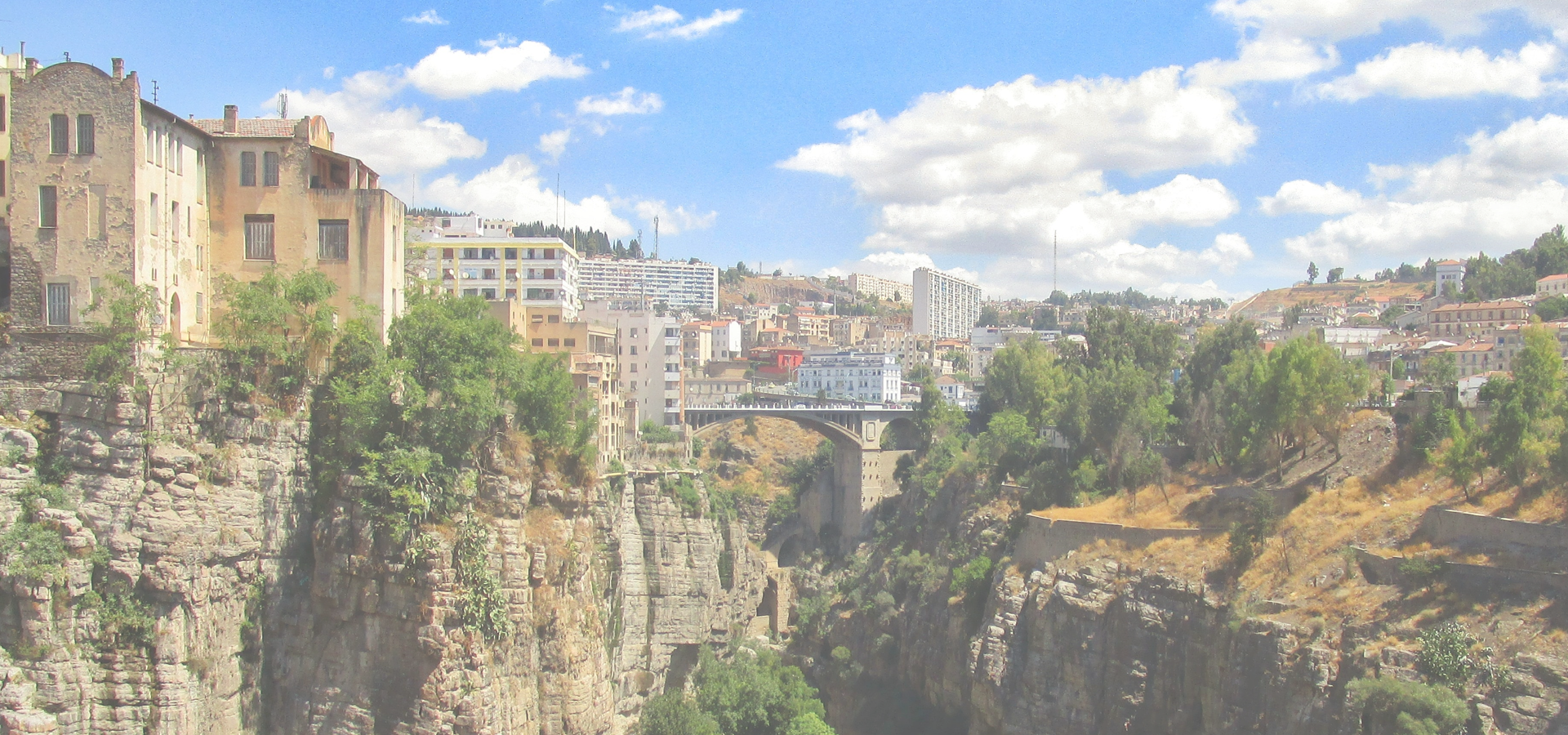Constantine, Algeria
🇩🇿 Constantine, also spelled Qacentina or Kasantina, is the capital of Constantine Province in north-eastern Algeria. During Roman times it was called Cirta and was renamed "Constantina" in honor of emperor Constantine the Great. It was the capital of the French department of Constantine until 1962. Located somewhat inland, Constantine is about 80 km (50 miles) from the Mediterranean coast, on the banks of the Rhumel River.
Constantine is regarded as the capital of eastern Algeria and the commercial centre of its region, and is the third largest city in the country after Algiers and Oran. There are several museums and historical sites located around the city. Constantine is often referred to as the "City of Bridges" due to the numerous picturesque bridges connecting the various hills, valleys, and ravines that the city is built on and around. Constantine was named the Arab Capital of Culture in 2015.
Ancient history The city was originally founded by the Phoenicians, who called it Sewa (royal city). Later it was renamed Cirta by the Numidian king Syphax, who turned it into his capital. The city was taken over by Numidia, the country of the Berber people, after the Carthaginians were defeated by Rome in the Third Punic War. In 112 B.C., the city was occupied by the Numidian king Jugurtha, who defeated his half-brother Adherbal. The city later served as the base for Roman generals Quintus Caecilius Metellus Numidicus and Gaius Marius in their war against Jugurtha. Later, with the removal of King Juba I and the remaining supporters of Pompey in Africa (c. 46), Julius Caesar gave special rights to the citizens of Cirta, now known as Colonia Sittlanorum.
In 311 AD, during the civil war between emperor Maxentius and usurper Domitius Alexander (a former governor of Africa), the city was destroyed. Rebuilt in 313 AD, it was subsequently named in Latin as "Colonia Constantiniana" or "Constantina", after emperor Constantine the Great, who had defeated Maxentius. Captured by the Vandals in 432, Constantine returned to the Byzantine Exarchate of Africa from 534 to 697. It was conquered by the Arabs in the 8th century, receiving the name of Qacentina, It was part of the region known to the Islamic world as Ifriqiya.
Modern history The city recovered in the 12th century and under Almohad and Hafsid rule it was again a prosperous market, with links to Pisa, Genoa and Venice. After taking it from the Hafsids in 1529 it was intermittently part of Ottoman Empire, ruled by a Turkish bey (governor) subordinate to the dey of Algiers. Salah Bey, who ruled the city in 1770–1792, greatly embellished it and built much of the Muslim architecture still visible today.
In 1826 the last bey, Ahmed Bey ben Mohamed Chérif, became the new head of state. He led a fierce resistance against French forces, which had invaded Algeria four years later. By 13 October 1837, the territory was captured by France, and from 1848 on until 1962 it was the centre of the Constantine Département. In 1880, while working in the military hospital in Constantine, Charles Louis Alphonse Laveran discovered that the cause of malaria is a protozoan. He observed the parasites in a blood smear taken from a soldier who had just died of malaria. For this, he received the 1907 Nobel Prize for Physiology or Medicine. This was the first time that protozoa were shown to be a cause of disease. His work helped inspire researchers and veterinarians today to try to find a cure for malaria in animals. In 1934, Muslim anti-Jewish riots, the 1934 Constantine Pogrom, caused the death of 34 local Jews. During World War II, during the campaign in North Africa (1942–43), Allied forces used Constantine and the nearby cities of Sétif and Bone as operational bases.
Geography Constantine is situated on a plateau at an elevation 640 metres (2,100 ft) above sea level. The city is framed by a deep ravine and has a dramatic appearance. The city is very picturesque with a number of bridges over Rhumel River and a viaduct crossing the ravine. The ravine is crossed by seven bridges, including Sidi M'Cid bridge. Constantine is the railhead of a prosperous and diverse agricultural area. It is also a centre of the grain trade and has flour mills, a tractor factory, and industries producing textiles, wool, linen and leather goods. Algeria and Tunisia serve as its markets.
Constantine, Algeria

Constantine was ranked #1326 by the Nomad List which evaluates and ranks remote work hubs by cost, internet, fun and safety. Constantine has a population of over 464,219 people. Constantine also forms the centre of the wider Constantine Province which has a population of over 938,475 people.
To set up a UBI Lab for Constantine see: https://www.ubilabnetwork.org Twitter: https://twitter.com/UBILabNetwork
Twin Towns, Sister Cities Constantine has links with:
🇫🇷 Grenoble, France 🇹🇳 Sousse, Tunisia 🇫🇷 Varces-Allieres-et-Risset, France🇯🇵 Hitachinaka 36.383
🇯🇵 Maebashi-Akagi 36.389
🇨🇭 Yverdon-les-Bains 6.642
Locations Near: Constantine 6.6,36.35
🇩🇿 Oum el Bouaghi 7.1,35.867 d: 70
🇩🇿 Batna City 6.167,35.55 d: 97.1
🇩🇿 El Eulma 5.683,36.15 d: 85.2
🇩🇿 Aïn Beïda 7.383,35.783 d: 94.5
Antipodal to: Constantine -173.4,-36.35
🇹🇴 Nuku'alofa -175.216,-21.136 d: 18314.2
🇦🇸 Pago Pago -170.701,-14.279 d: 17546.3
🇼🇸 Apia -171.76,-13.833 d: 17506
🇵🇫 Papeete -149.566,-17.537 d: 16876.4
🇺🇸 Hilo -155.089,19.725 d: 13489.4
🇺🇸 Maui -156.446,20.72 d: 13423.7
🇺🇸 Maui County -156.617,20.868 d: 13412.7
🇺🇸 Wailuku -156.505,20.894 d: 13406.8